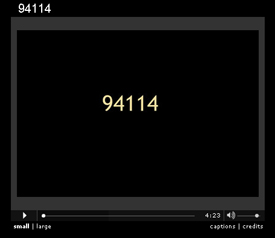Ragnar Axelsson's "Faces Of The North"

Some months ago I stumbled upon a book by Icelandic photographer Ragnar Axelsson with some of the more stunning photos I've seen depicting life in rural areas where snow, cold and wind is an almost constant factor.
The book, titled "Faces of the North", features about one hundred powerful images taken over the past decade and a half. Through the images the reader gets exposed to some of the vanishing lifestyles in the North Atlantic (Greenland, Iceland and the Faroe Islands) and the struggles - and joy - of life in these regions.
Born in 1958, Ragnar Axelsson is probably Iceland's most famous photographer. He has worked as a staff photographer for the Icelandic newspaper "Morning Paper" since 1976 and have had his work published in Life, National Geographics, Time and others.
Ragnar is also a recipient of the "Oskar Barnack Award" (2001) that is awarded to photographers whose "powers of observation most vividly express man's relationship to his environment".

Ragnar was kind enough to send me a free, signed copy of his book - and just returning from an assignment up in the mountains where he photographed sheep roundups across over a hundred mountaintops he was more than happy to provide some additional information about his photography.
=======================================================================================
What camera(s) were you using for taking the photos in the book "Faces of the North"?
Ragnar: I used a Leica M4-P and Leica M6. I also use a Mamiya 7 (6x7 images), Linhof 6x12 and a few shots are taken with a Pentax 6x7.
Do you have any film preference when you go on assignments like these and if so which one(s)?
Ragnar: I used mostly Kodak Tri-X - but I did end up also using Kodak Technical Pan 25 which I rated at 50. I find it to be a difficult film to develop - but the results are great. I am currently trying to use Kodak TMAX 100 and I like it a lot as the grain is very fine - but Tri-X is still close to a perfect film I think.
How did you end up using Leica cameras?
Ragnar: I've used Leicas since 'the beginning' since my father, who was an avid photographer himself, used them and I find the lenses to be great.
How did the Leicas perform during what seems to be quite extreme weather conditions?
Ragnar: In the colder climates like in Greenland it was the only camera that still worked perfectly through the cold without getting stuck. I can't say the same about my Mamiya and a Canon that I tried out on that trip.
The cold got down to -40 Celcius (-40 Fahrenheit).
What lenses do you bring with you when shooting images like the ones featured in this book?
Ragnar: Most of the time I used lenses with a focal length from 21mm up to 50mm on my Leica(s) and a 43mm on my Mamiya 7. I also brought a 200mm lens for my Pentax camera in case there would be polar bears coming in a bit close. I prefer wider lenses and really only use long lenses when I do editorial work in sports and news for my paper. Doing documentary work I much rather prefer wide lenses.
Who are your own icons - or who inspires you?
Ragnar: There are many. I look at photographs from all around the world and many photographers makes me feel happy just seeing their work.
I do like the old masters like W. Eugene Smith a lot and the old LIFE photographers which I think were great and they inspiered me a lot. Mary Ellen Mark is a good friend of mine and I like her work and her passion for photography a lot. Henry Cartier bresson is also one of my favorite.
Nowadays I think James Nachtwey is one of the greatest ones - he is quiet and is always showing some great stuff.
=======================================================================================
 I personally really enjoyed "Faces of the North" and can recommend it to anyone interested in photography with a strong human focus. The book - which is in tritone B&W and printed on high quality paper - can be ordered from the publisher (Edda Publishing) by emailing them at edda@edda.is
I personally really enjoyed "Faces of the North" and can recommend it to anyone interested in photography with a strong human focus. The book - which is in tritone B&W and printed on high quality paper - can be ordered from the publisher (Edda Publishing) by emailing them at edda@edda.isFor more information and images see Ragnar Axelsson's online site









































